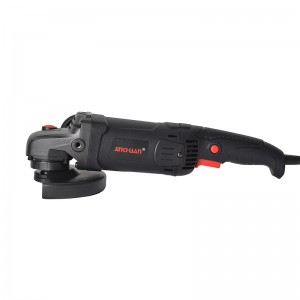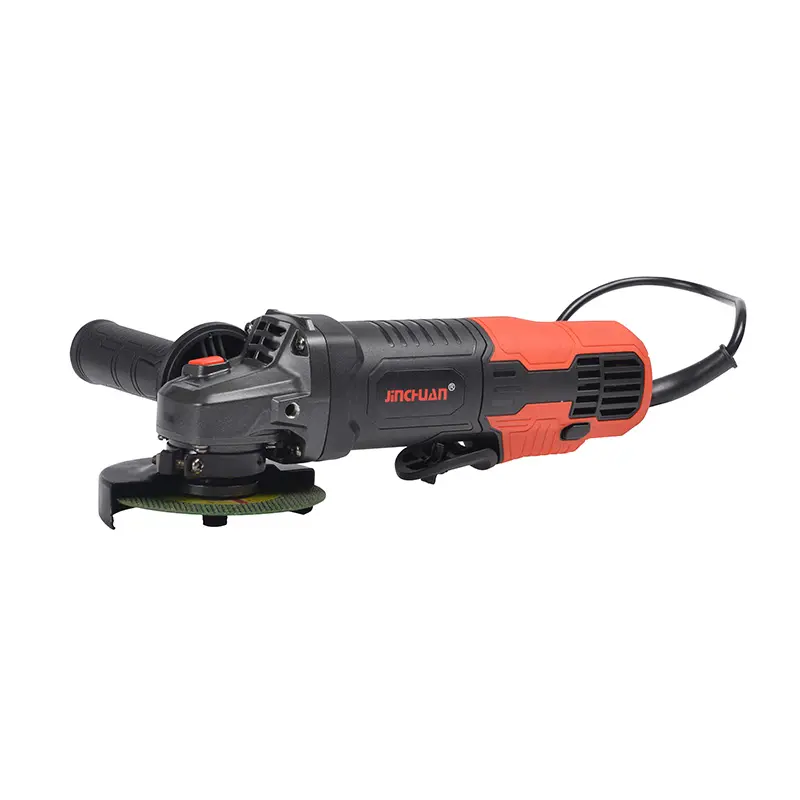In the world of Angle grinders, switch design is far more than simple power control – it is an important interaction interface between people and tools, directly affecting work efficiency and operation experience. Paddle switches and trigger switches, as two mainstream operation methods, each influence users’ work efficiency and comfort with their unique design concepts.
The most obvious difference between the two types of switches lies in their ease of operation. The trigger switch adopts the familiar push-type design, controlling the start and stop of the device by the pressure of the finger. This approach conforms to the majority of people’s habitual understanding of tool operation and has a relatively low learning cost. The paddle switch, on the other hand, adopts a toggle design and is usually located at the rear of the device. It is activated by pressing the entire palm, providing a brand-new operating experience.
The fatigue level during continuous operation is significantly different. The trigger switch requires continuous pressure from the fingers. Prolonged use may cause finger fatigue. Especially when precise operation is required, maintaining a stable pressure output demands considerable concentration. Paddle switches allow for a more natural hand posture. By exerting force through the palm as a whole, the operating pressure is distributed to a larger contact area, reducing the burden on a single finger.
The considerations of safety performance each have their own characteristics. The push-type design of the trigger switch usually requires continuous force application. Once the hand is released, the device will stop, which provides an immediate stop safety guarantee in some cases. Paddle switches often have a locking function. Once activated, they can work continuously, reducing hand pressure during long-term operation. However, users need to remember to unlock them in time.
Fine control ability is another important dimension. The trigger switch can achieve more delicate speed adjustment through the size of the pressure, making it suitable for operation scenarios that require precise control of the rotational speed. The user’s fingers are like regulating valves, allowing for fine-tuning of the output power as needed. Although paddle switches may also offer multiple speed Settings, they usually focus more on the convenience of quick start and stop as well as continuous operation.
The adaptability of two-handed operation deserves attention. The design of trigger switches usually takes into account the convenience of use with both hands and is suitable for work scenarios that require frequent hand changes. The position of the paddle switch is fixed, which may require the user to adapt to a specific holding method. However, once familiar with it, it can also provide a smooth operation experience.
The influence of the work pace cannot be ignored. Trigger switches are suitable for intermittent operations and scenarios where frequent start and stop are required. The pressure control of fingers enables users to adjust their working state at any time. Paddle switches are more suitable for long-term continuous operation. The locking function allows users to focus more on the work itself rather than maintaining the pressing action continuously.
Each application scenario has its own advantages in terms of adaptability. The precise control of the trigger switch is suitable for fine grinding and operations that require variable rotational speeds. The convenience of paddle switches is more evident in large-scale grinding and long-term operation. Understanding one’s own type of work and working habits is helpful for choosing the most suitable operation mode.
Advancements in ergonomic design have led to continuous optimization of both types of switches. Modern trigger switches focus on reducing the pressing force and improving the feel, while paddle switches are also constantly improving their position design and activation methods. These improvements are constantly enhancing the user’s operational experience and reducing fatigue.
Personal preferences play an important role in choices. Some users are accustomed to the control feel of traditional trigger switches and enjoy the precision of directly controlling the speed with their fingers. Some other users prefer the convenience of paddle switches, especially when long-term operations are required. Actual experience often speaks better than specification parameters.
No matter which operation mode is chosen, the key is to find the one that best suits your working habits and needs. A good tool should be an extension of the hand rather than a device that requires special adaptation. In the field of Angle grinders, which emphasizes efficiency, the choice of operation mode directly affects the quality of work and comfort, and is worthy of serious consideration by users. After all, the most suitable tools can not only enhance work efficiency but also make the work process more enjoyable.
Post time: Sep-22-2025


